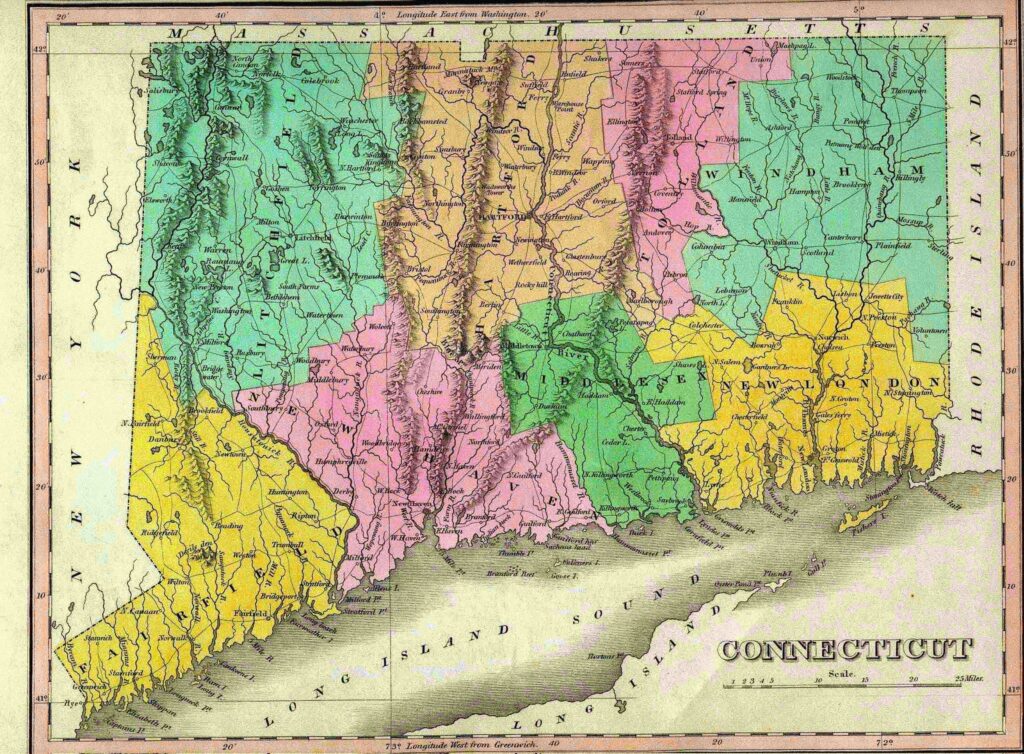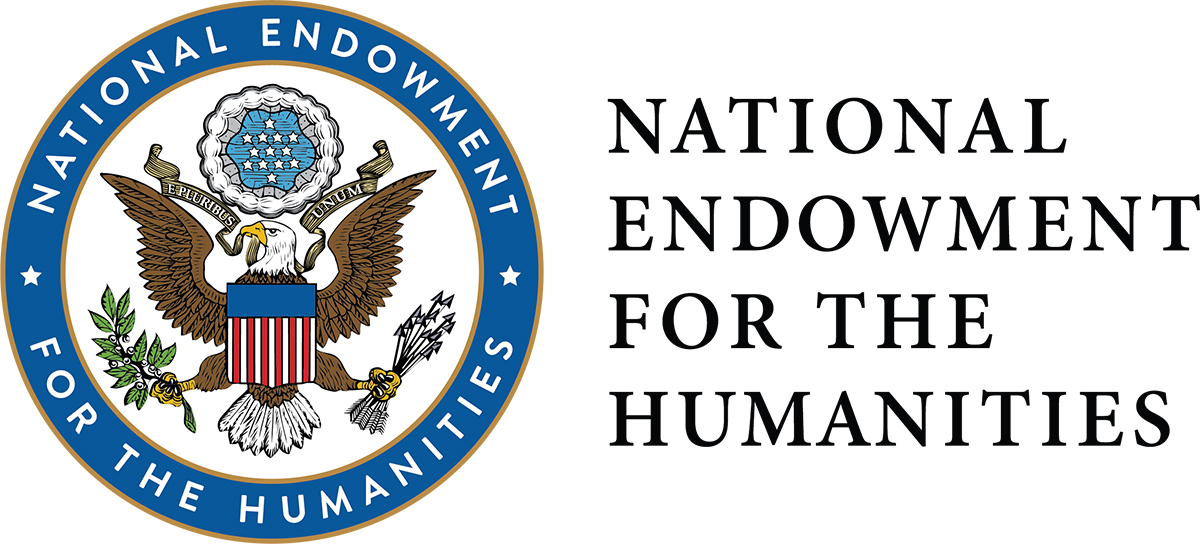By CTH Staff
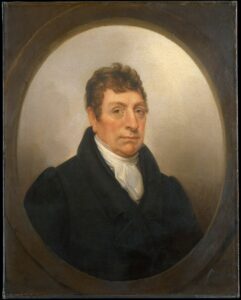
The Marquis de Lafayette, 1825 – By Rembrandt Peale, Metropolitan Museum of Art. Used through Public Domain.
The Marquis de Lafayette (Marie-Joseph Paul Yves Roch Gilbert du Motier de La Fayette) was a French aristocrat who volunteered to serve in the Continental Army during the American Revolution. Only 19 when he enlisted, Lafayette became one of George Washington’s trusted advisors and helped secure French financial aid and troops to help win the war.
Almost five decades after the United States declared independence, Congress passed a resolution to extend an official invitation to Lafayette to tour the country as “The Nation’s Guest.” Lafayette traveled via a small merchant ship, the Cadmus, and arrived in New York on August 15, 1824. On the Cadmus, Francis Allyn of New London, Connecticut was the captain and Daniel Chadwick of Lyme was the first mate. Over the next 13 months, Lafayette and his entourage traveled over water and land to 24 states, totaling over six thousand miles to meet the American people.
While Lafayette’s tour was meant to remind Americans of the Revolution’s ideas and values, Lafayette himself was a different man than he was in the 1770s. After the American Revolution, Lafayette returned to France where he was elected to the National Assembly and imprisoned during the French Revolution. Lafayette carried forward democratic ideals throughout his life—he drafted the Declaration of the Rights of Man and of the Citizen in 1789 and attempted to devise plans for the gradual manumission of slavery. No longer a young man, Lafayette was 67 when he returned to the United States, walked with a cane, and wore a wig to cover his baldness.
Intended to reignite patriotic feelings and celebrate almost half a century as a new nation, Lafayette’s 1824/25 visit was a significant and memorable event for virtually every community he passed through. Over the course of his tour, Lafayette was met with large crowds, welcoming committees, notable town members, Revolutionary War veterans, receptions, and other honors. After his arrival in the United States, representatives from Connecticut traveled to formally invite Lafayette to their respective towns. In Connecticut, Lafayette spent more time (up to several hours) in larger cities like New Haven, Hartford, and Middletown, but he still stopped for 30 minutes to an hour in smaller towns he passed through. The following are the towns Lafayette visited on the Connecticut section of his tour in 1824 (click each arrow to learn more):
August 20, 1824
Greenwich
As Lafayette crossed Byram’s Bridge into Connecticut around 4pm, the Connecticut Troop of Horse and a large group of men designated “The Lafayette Guard” greeted him and fired a 13-gun salute. Worried about the horses’ safety on the hazardous road leading into Greenwich, the men physically pulled the carriage ceremoniously into town. While in Greenwich, Lafayette visited the home of Colonel Thomas Mead as well as a memorial to Revolutionary War General Israel Putnam at Putnam Hill.
Stamford
Lafayette and his entourage attended a reception at the home of John and Mary Sylvester Welles Davenport. In addition to being a state politician, Davenport served in the Continental Army during the Revolutionary War and was a charter member of the Connecticut Order of the Cincinnati. Reportedly, hundreds of guests attended the reception and more gathered in the streets surrounding the Davenport mansion.
Norwalk
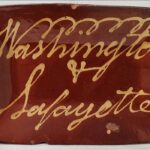
Washington and Lafayette Dish from Day’s Pottery or Smith Pottery, Norwalk, Connecticut, circa 1824. – Norwalk Historical Society. Used through Public Domain.
As Lafayette arrived in town, muskets blasted and school bells rang. Lafayette attended a reception at the Norwalk Hotel where he greeted crowds and met local officials.
Westport
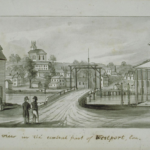
John Warner Barber’s view in the central part of Westport, CT, circa 1836. – By John Warner Barber, Connecticut Museum of Culture and History. Used through Public Domain.
Lafayette did not stop in Saugatuck (now Westport), but when Lafayette passed through in the dark, residents shouted “huzzahs” at his carriage.
Fairfield
Because Lafayette had arrived so late, he was unable to address the town of Fairfield, but he did dine with prominent men at James Knapp’s tavern. Samuel Rowland welcomed Lafayette with a speech and Lafayette shared memories of passing through Fairfield during the Revolutionary War a year before the town was burned by the British. After dinner, Lafayette returned to his carriage to travel on to Bridgeport to spend the night.
Bridgeport
Bridgeport originally expected Lafayette for dinner and made elaborate preparations until receiving word that the party would arrive much later. Lafayette spent the night at Ephriam Knapp’s Washington Hotel and greeted residents from the balcony the next morning. After ringing bells and a sunrise salute convened the town, Lafayette spent a brief early morning at a reception. The town voted the next day to “pay General de lay Fayette’s bill at Mr. E. Knapp’s.”
August 21, 1824
Stratford
Lafayette was welcomed into Stratford with bells, cannons, and crowds. He met distinguished members of the town at Marshall’s Inn and briefly stopped the carriage in front of Judge Samuel W. Johnson’s house—son of William Samuel Johnson, a signer of the US Constitution.
Milford
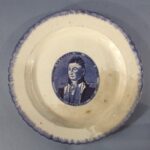
Commemorative earthenware plate with a portrait of Lafayette, circa 1824-1830. – By James & Ralph Crews, Connecticut Museum of Culture and History. Used through Public Domain.
There are no surviving newspaper accounts of Lafayette’s visit to Milford, but there is an account from Hagar Merriman in her 1861 autobiography. Merriman was a formerly enslaved woman who describes Lafayette passing through the town and shaking hands with many people. She remembered all the commemorative souvenirs and all the babies named in the General’s honor.
New Haven

John Warner Barber, Public square or green, in New Haven, 1825, wood engraving. 1950.575.3 – By John Warner Barber, Connecticut Museum of Culture and History. Used through Public Domain.
New Haven expected Lafayette to arrive on the evening of the 20th, so they made elaborate preparations, including illuminations of the city. The next morning, the Company of Horse Guards escorted Lafayette’s group into New Haven to a three-gun salute and crowds of hundreds of people.
At Morse’s Hotel, Lafayette met the Common Council, aldermen, mayor, Governor Oliver Wolcott Jr., and Revolutionary War veterans—including Col. Benjamin Tallmadge. After being introduced to clergy members, college faculty, and civil and military authorities, Lafayette addressed the crowd, and troops and college students paraded in front of the hotel.
After breakfast at the hotel, Lafayette reviewed troops at the New Haven Green and briefly visited the residences of Nathan Smith, David Dagget, and David C. DeForest. He toured the Mineralogical Cabinet and Library at Yale College before paying his respects at the graves of comrades at the New Burying Ground (now Grove Street Cemetery).
At the home of Benjamin Silliman, Lafayette met with Silliman’s wife Harriet Trumbull Silliman and her mother, Eunice Backus Trumbull, the widow of former Governor Jonathan Trumbull Jr. As Lafayette left New Haven in the afternoon, a long parade followed him out of town.
East Haven
Lafayette stopped at the East Haven Green where he had camped for several days in 1778 with his troops during the Revolutionary War. He met the sons of Reverend Nicholas Street whose parsonage he stayed at 46 years earlier and received refreshments at the home of Captain Daniel Bradley. The town erected a liberty pole in Lafayette’s honor.
Branford
Lafayette passed through Branford, but there is little written about what occurred other than The New York Commercial Advertiser reporting that “his reception was very gratifying, the people being assembled from all quarters to receive him.”
Guilford
Militia met Lafayette’s carriage at the town border and he rode into town to greet people in the public square. Lafayette met with veterans and residents at Miner Bradley’s Tavern.
Madison
Lafayette briefly passed through East Guilford (now Madison), but reports indicate that he was anxious to continue on his journey. Ichabod Scranton gathered residents to salute Lafayette outside the home of the postmaster, Curtis Wilcox.
Clinton
Due to vague newspaper reports, it is unclear exactly where Lafayette stopped in Killingworth (now Clinton). Most likely there was a military display in a central location like the village green.
Westbrook
In the late evening, Lafayette passed through Westbrook and residents cheered as he went by.
Old Saybrook
Lafayette arrived in Saybrook (now Old Saybrook) at around 10pm and spent the night, but there are different accounts of what he did. The New York Commercial Advertiser reported that Lafayette retired to bed soon after arriving due to the late hour. Local lore, however, insists that Lafayette attended a reception and dance in his honor at Humphrey Pratt’s Tavern.
August 22, 1824
Old Lyme
After leaving Saybrook, Lafayette crossed the Connecticut River by ferry to Lyme (now Old Lyme) to have breakfast with Richard McCurdy, the son of an old acquaintance, John McCurdy.
East Lyme
Lafayette addressed a crowd outside of Calkin’s Tavern in Lyme (now East Lyme).
New London
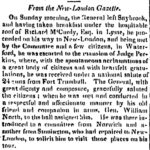
Clipping from the Connecticut Courant, August 31, 1824 about Lafayette’s tour. – Connecticut Courant. Used through the Public Domain.
After a 24-gun salute, Lafayette addressed a crowd outside of the mansion of Judge Perkins. According to 19th century historian Frances Caulkins, when shown the room George Washington had slept in 1776, Lafayette is said to have “knelt reverently by the side of the bed, and remained a few minutes in silent prayer.” Lafayette attended church services at both the Congregational and Episcopal churches.
Norwich
Lafayette was welcomed by Norwich’s mayor at the Kinney (or Kenney) Hotel, addressed the crowd, and met with individuals. He dined with the city’s leaders, occasionally acknowledging the outside crowds from the window.
Jewett City
Lafayette briefly stopped in Jewett City (now Griswold) to greet residents and meet veterans.
Plainfield
Lafayette spent the night at Eaton’s Tavern in Plainfield, the same establishment that hosted some of comte de Rochambeau’s officers during their encampment in Plainfield during the Revolutionary War in 1781.
September 3, 1824
Stafford
After touring Rhode Island, Massachusetts, and New Hampshire, Lafayette passed through Connecticut on his way back south. Due to heavy rain and bad roads, Lafayette’s entourage was late, but a delegation met them at the border with a new carriage and accompanied them to Stafford. Lafayette was reunited with Daniel Wadsworth and met residents in Hyde’s Tavern. The group spent the night at the Stafford Springs Hotel.
September 4, 1824
Tolland
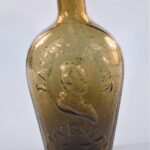
Figured flask from Coventry Glass Works, located not far from Tolland and Vernon. There is a raised profile bust and text “LAFAYETTE.” – Coventry Glass Works, Connecticut Museum of Culture and History. Used through the Public Domain.
Lafayette arrived in Tolland around 7am and supposedly stopped briefly to meet with veterans at Elijah Smith’s Tavern.
Vernon
Lafayette may have stopped at the King’s Stage House for breakfast after failing to stay there the night before. Supposedly, the tavern acquired special French wallpaper for Lafayette’s visit.
Hartford
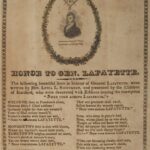
Broadside dedicated to General Lafayette in Hartford, circa 1825. – By Lydia Howard Sigourney, Connecticut Museum of Culture and History. Used through Public Domain.
Hartford made elaborate preparations in anticipation of Lafayette’s visit including illuminations, decorations, and fireworks. When Lafayette finally arrived (half a day late), he was welcomed with a parade and received by Mayor Jonathan Brace and Governor Oliver Wolcott Jr. at Bennett’s Hotel.
As Lafayette arrived at the State House (now the Old State House), he was greeted by approximately eight hundred children, who strewn flowers in his path and presented him with a gold medal and a poem by Lydia Huntley Sigourney.
At the State House, Lafayette greeted hundreds of people before observing a parade of Revolutionary War veterans. At the home of Daniel Wadsworth, the deceased family of Heman Swift presented Lafayette with the sash and epaulettes he wore when wounded at the Battle of Brandywine. Around 4pm, Lafayette boarded the steamboat Oliver Ellsworth and traveled down the Connecticut River towards Middletown.
Middletown
The Oliver Ellsworth docked at the Upper Houses (now Cromwell) to throngs of crowds. Lafayette and his son, George Washington Lafayette, traveled in barouches into the city of Middletown, which was decorated in his honor.
There was a reception at the Mansion House Hotel where Lafayette met the Common Council, clergy members, and veterans. Lafayette was paraded through the town and stopped at the home of Commodore Thomas Macdonough, a famous naval hero of the War of 1812. While Lafayette was supposed to dine at the hotel, he declined the invitation and departed on the steamship.
Lafayette departed from the United States on September 8, 1825 after over a year of travel, celebrations, and reunions. He sailed back to France on the USS Brandywine—a 44-gun frigate renamed to honor the Revolutionary War battle where Lafayette had been wounded. Captain Charles Morris, born in Woodstock, Connecticut, commanded the ship. The last major general of the American Revolution, Lafayette died in 1834 in France—less than a decade after his final tour of the United States.
This article was adapted from the Connecticut Lafayette Trail project and website that was partially funded by a CT Humanities Quick Grant to the Norwalk Historical Society in 2023.





